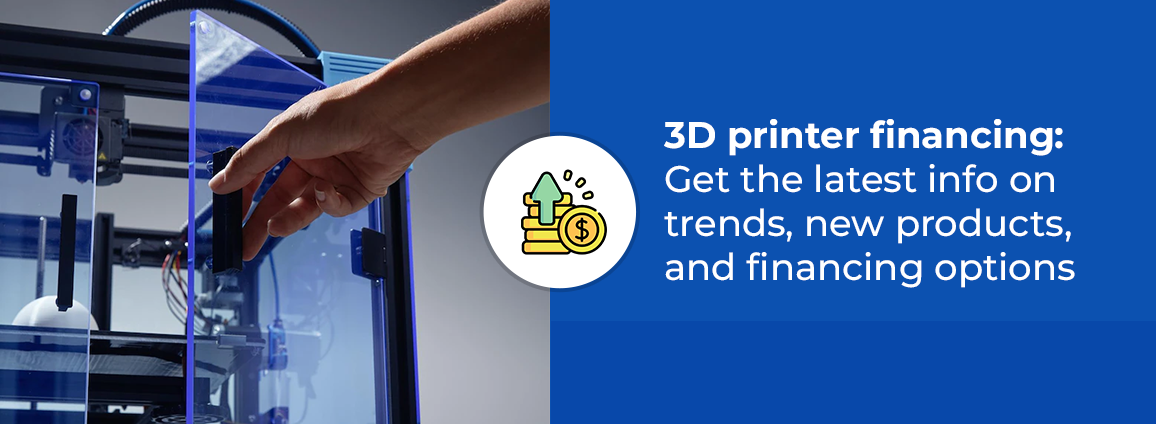3D printing is revolutionizing the way we think about production and manufacturing. It’s a technology that allows us to create physical objects from a digital design, and in recent years, it has taken off. From small businesses to large corporations, 3D printing is being used in more industries than ever before. But with new advancements in technology, how can you keep up? In this blog post, we will discuss the current trends in 3D printing, look at what’s new in terms of technology and materials, and provide tips on 3D printer financing. Read on to learn more!
What is 3D Printing?
3D printing is a manufacturing process in which objects are created by depositing material layer by layer. The technology has been around for decades, but it has only recently become widely available and affordable.
3D printing offers many benefits over traditional manufacturing methods. It is much faster and more flexible, allowing for the creation of complex shapes that would be difficult or impossible to produce using traditional methods. Additionally, 3D printing is much less expensive than traditional manufacturing, making it an attractive option for small businesses and hobbyists.
There are a few different ways to finance your 3D printer purchase. One option is to take out a loan from a bank but it's a very long and time-consuming process. Another option is to use an equipment financing company such as Trust Capital USA that can give you competitive rate and flexible payment options
The Different Types of 3D Printers
There are three types of 3D printers: FFF, SLA, and SLS.
- FFF (Fused Filament Fabrication) 3D Printers use a process where filament is melted and extruded through a nozzle to create a three-dimensional object. This type of printer is the most common and typically the most affordable.
- SLA (Stereolithography) 3D Printers use a process where a laser is used to cure resin into the desired three-dimensional shape. This type of printer is typically more expensive than FFF printers but offers higher resolution and accuracy.
- SLS (Selective Laser Sintering) 3D Printers use a process where powdered material is sintered by a laser to create the desired three-dimensional object. This type of printer is typically the most expensive but offers the highest resolution and accuracy.
What Are the Latest Developments in 3D Printing?
3D printing technology has come a long way in recent years, and the latest developments are truly impressive. Perhaps the most exciting development is the ability to print metal objects. This opens up a whole new world of possibilities for manufacturers and engineers.
3D printing has a wide range of applications, including rapid prototyping, manufacturing, and composite tooling.
Rapid prototyping refers to the process of creating a physical model of a design quickly and at a low cost. 3D printing is ideal for rapid prototyping because it allows for the creation of complex and customized objects quickly and at a lower cost compared to traditional manufacturing methods.
Manufacturing refers to the process of producing goods on a large scale. 3D printing is increasingly being used in manufacturing to produce complex and customized parts and products, such as aerospace components and consumer products.
Composite tooling refers to the process of using composite materials, such as fiberglass or carbon fiber, to create tools and molds. 3D printing is ideal for composite tooling because it allows for the creation of complex and customized tools and molds quickly and at a lower cost compared to traditional methods.
In summary, 3D printing has a wide range of applications, including rapid prototyping, manufacturing, and composite tooling, and has the potential to revolutionize a wide range of industries.
Pros and Cons of 3D Printing
3D printing technology has revolutionized manufacturing and design, making it possible to create complex objects with a wide range of materials. But like any new technology, there are both pros and cons to 3D printing.
Pros:
-3D printing is very versatile. You can print with a wide range of materials, including metals, plastics, glass, and even food.
-3D printers are becoming increasingly affordable, making them more accessible to small businesses and hobbyists.
-3D printing can be used to create customized products or one-of-a-kind objects.
Cons:
-The learning curve for 3D printing can be steep. It takes time and practice to become proficient at using CAD software and operating the printer.
-3D printed objects can have imperfections, such as layer lines or air bubbles.
-3D printers require specialized filaments or inks, which can be costly.
What Can You Print with a 3D Printer?
3D printers can be used to create a variety of objects, including models, prototypes, and parts for machines. With some 3D printers can also print food and human tissue and you can print houses, medical devices, and Industries: Consumer Products, Automotive, Aerospace, Medical, Dental
In the rapidly-evolving world of 3D printing, it seems like anything can be printed. And while that may not be entirely true, there are a wide variety of items that can be printed using a 3D printer.
With 3D printing, it is now possible to print everything from houses and medical devices to consumer products, automotive parts, and aerospace components.
One of the key benefits of 3D printing is its ability to produce complex, customized objects quickly and at a lower cost compared to traditional manufacturing methods. For example, it is now possible to print customized prosthetics or medical devices that are tailored to the specific needs of a patient. Similarly, 3D printing can be used to produce customized consumer products, such as phone cases or jewelry, at a much lower cost than traditional methods.
In the automotive industry, 3D printing is being used to produce lightweight and highly customized parts, such as engine components and exhaust systems. In the aerospace industry, 3D printing is being used to produce complex and lightweight parts, such as rocket engines and satellite components.
Overall, 3D printing is revolutionizing the way we think about manufacturing and production, and has the potential to revolutionize a wide range of industries, including consumer products, automotive, aerospace, medical, and dental.
Financing options for 3D Printer Financing
3D printing for commercial use can be expensive and a 3D Printer could cost up $500,000.00. Luckily the financing process for 3D printers is easy. A company only needs to complete a simple one page credit application, get an approval, confirm which financing option they would like to go with, sign equipment financing documents, authorize payment to your 3D printer vendor and your loan is funded that day.
Terms range from two to seven years. 100% 3D Printer purchase financing including taxes and shipping can be realized. You can request no payment up front or no payments up to six months after your purchase. As long as you own a business. The loan won't appear on your personal credit.
Final thoughts on Get the latest info on trends, new products, and financing options
3D printing technology is a rapidly growing industry, with new trends and innovations coming out every year. We hope this article has given you an overview of the current state of 3D printing, what’s new in the world of 3D printing, and how 3D printer financing helps your purchase if needed. With all these advancements in 3D printing technology, it’s now easier than ever before to get into this remarkable field and create amazing prints. So go ahead – explore the possibilities that come with owning your own 3D printer financing!


 (866) 458-4777
(866) 458-4777

 Paul Kendall
Paul Kendall





